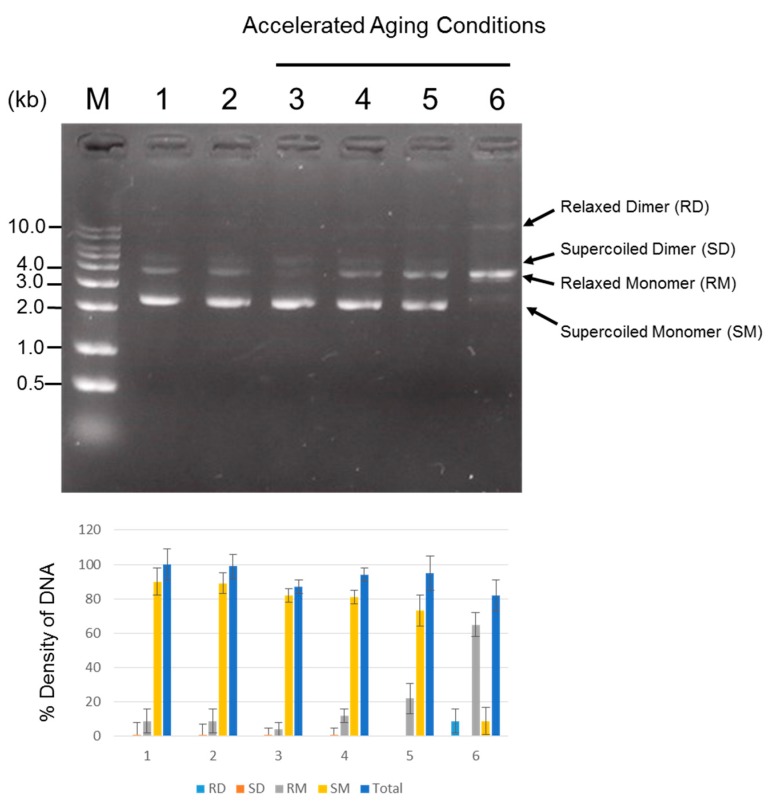Figure 3.
Analysis of plasmid DNA quality and quantity. One hundred ng of plasmid DNA was loaded to agarose gel wells and allowed to run. AGE was used to monitor the degree of DNA degradation or the conversion of the supercoiled form to the relaxed form. For quantification of DNA, densitometry was performed. The density of newly produced plasmid DNA as a control was set at 100%, and the band densities relative to the control are shown. The experiments were repeated twice in triplicate; bar, SE. The plasmid DNA under accelerated aging conditions (AAC) to 23 °C, 37 °C, 45 °C and 65 °C temperatures for 20 days corresponds to approximately 13 months, 34 months, 5 years and 20 years of storage at −20 °C, respectively. Newly produced plasmid DNA was used as a control. A p-value < 0.05 was considered statistically significant for confidence. M: DNA ladder; Lane 1: Newly produced plasmid DNA (Control); Lane 2: 3-year old plasmid DNA stored at −20 °C; Lane 3–6 (AAC test): Plasmid DNA stored at 23 °C, 37 °C, 45 °C and 65 °C for 20 days.

